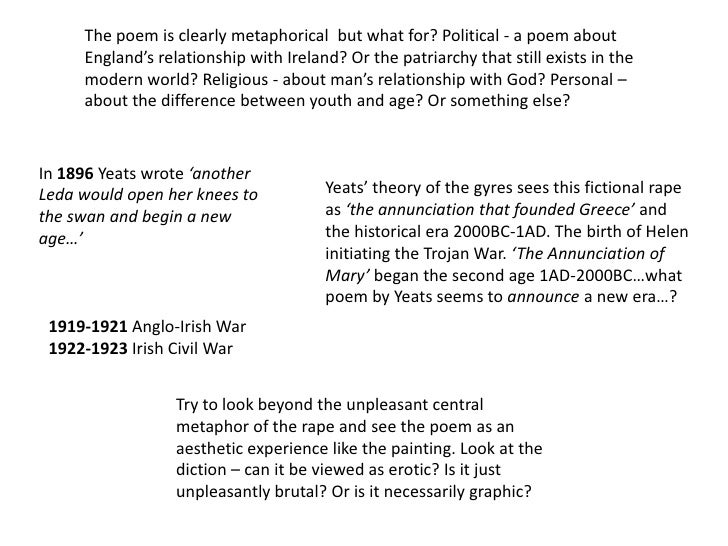

The interference of the divine in human affairs is not shown in glorious terms as it is the seed of destruction that Leda conceived. This could be a reference to Irish struggle for independence and how Yeats perceived history using the theory of gyres. Yeats had his heart set on conveying that a new era is going to start the era of violence and destruction. The single event has been used to understand the larger politics of Yeats’s times. By using a number of bold, visual images and asking a number of rhetorical questions, the poet wishes to convey that human beings do bow down in front of the affairs of nature or fate just like the hapless girl, Leda surrendered and allowed Zeus to rape her. Yeats's speaker then wonders whether Leda could defy the “feathered glory from her loosening thighs”. The poem is permeated with allusions of mystical ideas about the universe and the Greek mythology, linking Helen of Troy and Leda. The poor girl could not retaliate being “caught in his bill” while the God “holds her helpless breast upon his breast”.

The octave narrates how Zeus metamorphoses into a big swan and with a “sudden blow” rapes Leda. This poem is written in iambic pentameter consisting of an octave and a sestet.

It is important to note that the idea of ‘rape’ that comes through the poetry is because it is written from Leda’s perspective. It is about the rape of a “staggering girl” Leda by God Zeus, in the form of a swan and poem expresses the consequences of it using sexually explicit images. ' Leda and the Swan’ was composed by William Butler Yeats in the form of a traditional sonnet. We are thankful for their contributions and encourage you to make your own. These notes were contributed by members of the GradeSaver community.


 0 kommentar(er)
0 kommentar(er)
